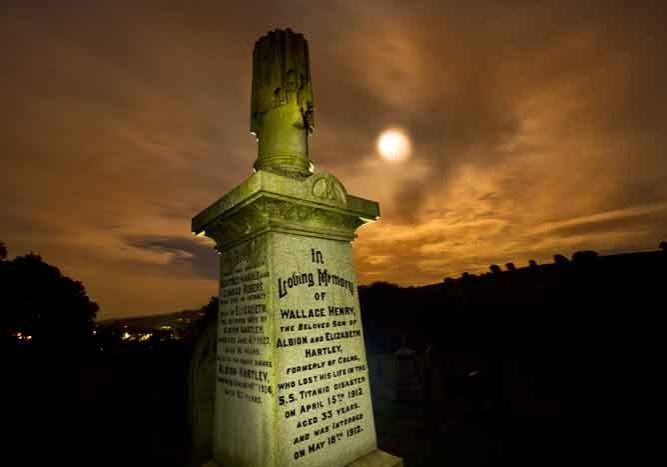
Dead Northern | 9 famous graves in Lancashire and Yorkshire
by Mark Davis
Ethel Preston

Born: 1861 Died: 1911 (Aged 50)
Location: Grade II Listed Memorial – Lawnswood Cemetery, Leeds.
Known as ‘Ethel at the Gate’, the Preston memorial features a life sized sculpture of Ethel waiting outside a slightly opened front door. It is said that Ethel is standing waiting at the open door to be reunited with her husband and that the door would finally be closed when he joined her.
However, Walter married his 22-year old house keeper Emily Florence Richardson just a year after Ethel’s demise. The iconic monument was commissioned by Ethel’s husband, Walter Preston and cost £2000 (equivalent to £130,000 today). When it was unveiled in 1913, thousands of people came to see it and paid a penny each to queue up and see it.
There are two arguments as to why Walter had it built. Some argue it’s because she was always waiting for him when he arrived home. However due to the statue’s sad expression, other people argue it’s because he was a womaniser and the statue was carved to reflect his remorse.
Interesting Fact: For the past ten years, someone has been putting fresh flowers in her arms.
Anne Brontë
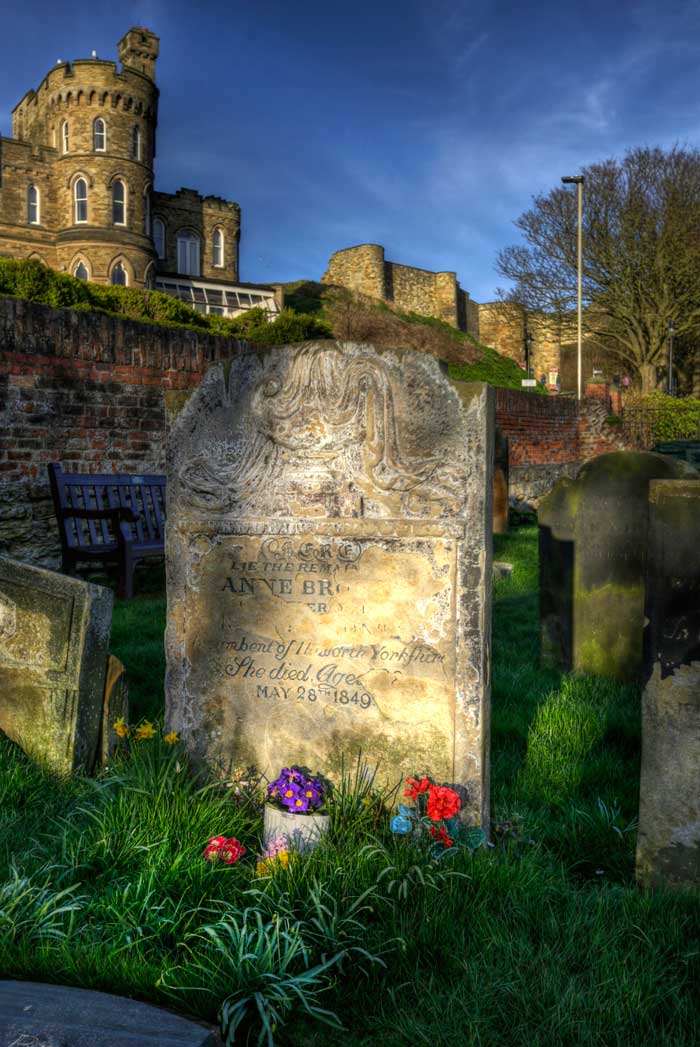
Born: 1820 Died: 1849 (Aged 29)
Location: Scarborough
Anne was the youngest member of the Brontë literary family. Like her siblings she was a novelist most famous for writing ‘Agnes Gray’ and ‘The Tenant of Wildfell Hall’. Anne worked as a governess but she was said to have a quiet and gentle disposition which is said to have caused her problems in controlling the children she taught. Anne died of ‘consumption’ which is now known as tuberculosis.
Interesting Fact: Anne is not buried with the rest of her family. Whilst all the other Brontës are buried in Haworth, Anne is in Scarborough where she wanted to die knowing already before travelling that the end was in sight, she was accompanied by her sister Charlotte, who decided after Anne’s death to ‘bury the flower where it had fallen.’
The Brontë Vault
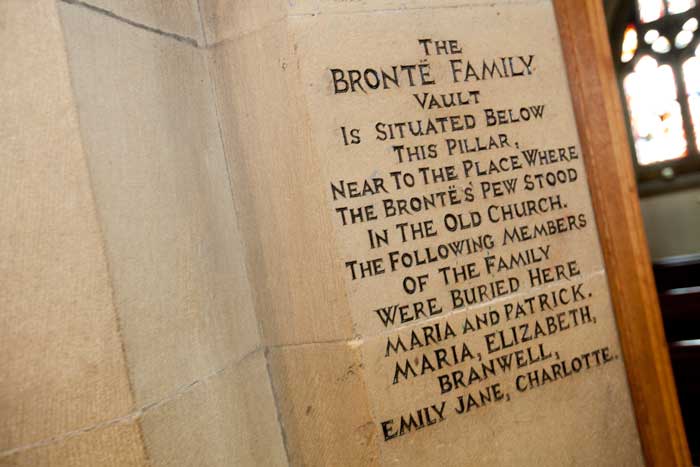
Location: Haworth
Unlike Anne, the rest of the Brontë family are buried in Haworth. The literary family’s remains can all be found close to where their pew was in the old Church where Patrick Brontë was priest. Branwell, a painter, sculptor and writer died in 1848 due to tuberculosis aggravated by alcoholism and drug addiction. Emily Brontë, is celebrated for writing Wuthering Heights also died in 1848 due to tuberculosis. Charlotte Brontë, most famous for writing Jane Eyre died in 1855. Her death is listed as tuberculosis but some argue it was due to severe morning sickness.
Interesting Facts: There were two other Brontë children who died in childhood of tuberculosis contracted at Cowan Bridge School (Charlotte wrote of Cowan Bridge in Jayne Eyre calling it Lowood), Maria (born in 1814) and Elizabeth (born in 1815). They both died in 1825 in Haworth.
William ‘Humbug Billy’ Hardaker
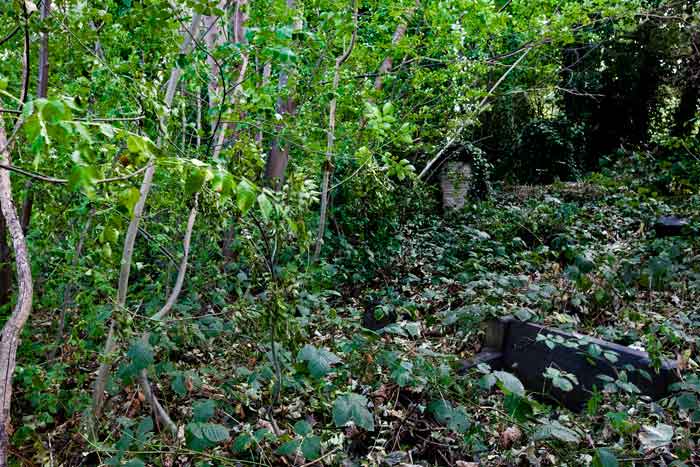
Born: 1805 Died: 1866 (Aged 61)
Location: Q section Undercliffe Cemetery Bradford
On 30th October 1858, Humbug Billy sold his arsenic loaded peppermint lozenges at the Green Market in Bradford. The event would go down as the worst case of accidental poisoning in Victorian history. He’d ordered his sweets off a wholesale confectioner Neal, who using a substance called ‘daft’ (plaster of Paris) to adulterate the sweets to keep prices down to order. The Chemist at Shipley, run by a Mr Hodgson who was ill in bed at the time when he went to buy it had been served by the young assistant Goddard, who accidentally gave him arsenic! Twenty one people died and over two hundred were seriously ill. The event contributed to the passage of the in the United Kingdom and legislation regulating the adulteration of foodstuffs.
Interesting Fact: Everyone directly involved was charged with manslaughter but no one was ever convicted.
James Berry

Born: 1852 Died: 1891
Location: Scholemoor Cemetery Bradford
James Berry was an English executioner from 1884 to 1891. He is credited with perfecting the infamous ‘long drop’ method that was developed by William Marwood. He improved the method so that he could calculate how much rope was needed for a ‘clean break’ in order to diminish physical suffering in capital punishment. He hanged 131 people including five women.
On his retirement, Berry toured as an evangelist giving lectures on phrenology. He also spoke about the terrible weight of capital punishment on the hangmen.
Interesting Facts: He is credited with killing William Bury, the man many people suspect to have been Jack the Ripper. Berry himself believed William Bury to be Jack The Ripper. The grave is easily found given the fact it is the only grave in the cemetery where nothing grows.
Sylvia Plath
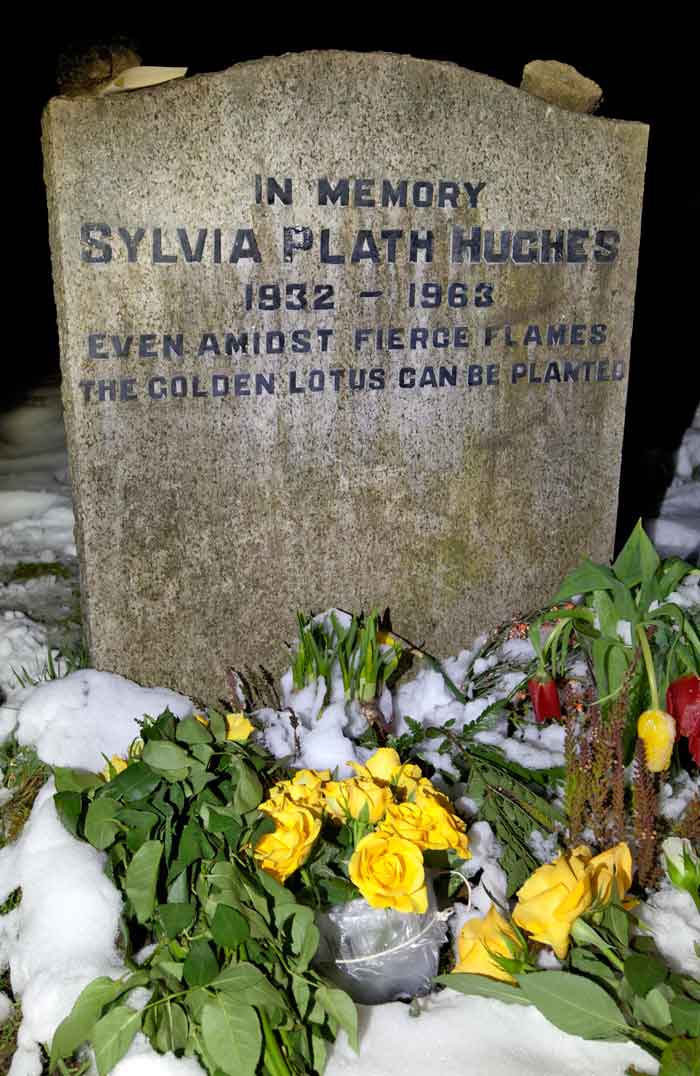
Born: 1932 Died: 1963
Location: Heptonstall.
Although born in America, Poet Plath spent most of her life living and writing in England. She published her first book, The Colossus in 1960 when she was just 28 years old. She also wrote numerous poems including ‘Daddy’ and ‘Lady Lazarus’. She married poet Ted Hughes in 1956 but they split up two years after the birth of their first child and from 1962, Plath lived alone in a small London flat with her two children. She was plagued with depression throughout her life and committed suicide in 1969 after a number of failed attempts. Every year people from all over the world visit Sylvia and more often than not either leave a pen or a pebble at the grave.
Interesting Facts: Plath’s gravestone has been vandalised throughout the years by people trying to remove her married name ‘Hughes’ from it. They argued that Hughes abused her. Their son, Nicholas, hanged himself in 2009. On 23 March 1969, six years after Plath’s suicide by asphyxiation from a gas stove, Assia Wevill the woman Ted Hughes left her for committed suicide in the same way.
Heathcliff

Born: Around 1764 Died: 1802 (Aged about 37)
Location: Haworth Moor
Heathcliff was an orphan brought home by a man named Mr Earnshaw who owned Wuthering Heights up on the moors of Haworth. Named after a son who died in childhood, Heathcliff grew up as part of Mr Earnshaw’s family. However, upon his death, Heathcliff was abused by Mr Earnshaw’s biological son, Hindley.
Heathcliff also fell in love with Catherine, Mr Earnshaw’s daughter. He was left heartbroken when she chose to marry Edgar Linton in order to gain social prominence. Because of this Heathcliff became a powerful and cruel man. He eventually acquired both Wuthering Heights and Catherine’s marital home of Thurshcross Grange.
Interesting Fact: Heathcliff was haunted by Catherine after her death. Due to his wish to be with her eternally and buried next to her he began to starve himself although it’s not believed he intended to commit suicide. Some believe they have seen the ghosts of Catherine and Heathcliff walking across the moors together.
Wallace Hartley

Born: 1878 Died: 1912 (Aged 33 years)
Location: Colne
Many argue that the part they played ranks amongst the most noble heroisms at sea.
Wallace Henry Hartley was a violinist and bandleader. He is famous for leading the eight member band that played upon the RMS Titanic as it sank. As the boat sank, Hartley and his band played music to try and keep the passengers calm. They played until the very end with witnesses claiming that Wallace exclaimed ‘Gentlemen, I bid you farewell!’ as they finally succumbed. Many argue that the part they played ranks amongst the most noble heroisms at sea.
Interesting Fact: The opening notes on his memorial are said to be the final song the band played as the ship sank ‘Nearer, My God, to Thee.’ The song was also played at his funeral.
Clarence Roe
Born: 1850 Died: 1909 (Aged 59)
Location: An unmarked grave at Menston Asylum Patient Burial Ground, Buckle Lane Menston.
A Bohemiam Painter, Clarence Roe painted hundreds of pictures and would have been one of the greatest British painters of the Victorian era if it hadn’t been for his admittance to an asylum as an alcoholic. Roe largely painted landscapes, particularly ones set in Scotland. His work can be seen in the Kirklees Museum, Southampton Art Gallery and the Abbey House Museum in Leeds. He died of ‘General paralysis of the insane’ a condition rising from syphilis in the Menston Asylum.
Interesting Facts: Clarence Roe was arrested for travelling on the train with no ticket. He believed that he owned shares in the Midland Railway Co. and did not need a ticket. This was described as a grandiose delusion associated with the disease. General Paralysis of the insane accounted for the largest proportion of deaths in all Victorian asylums. His grandfather sculptured Nelson’s Column.



